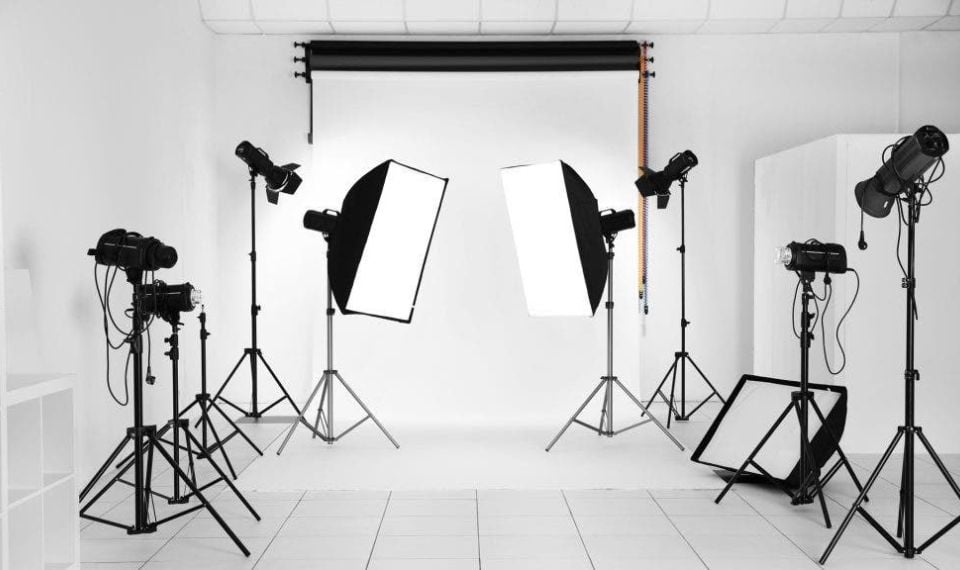How to choose the right light for your video production? What principles do videographers follow when dubbing their films? How do they choose soundtracks, sounds, and noises? Is this job the prerogative of sound engineers and editors?
Fill light
Video filming is the art of recording light - the flow of electromagnetic radiation, passing through the camera lens, becomes an optical image, which in turn falls on the photosensitive element (matrix) of the camera. Thus, it is light that is the main technical factor in obtaining an image.
Fill light is used to evenly illuminate the entire scene. It is usually used for either highlighting shadows or for general alignment of lighting in the frame. The fill light is placed to the side of the camera and usually above it. Most often it is used when recording a video in which a person is present.
The fill light source can be:
-
● professional lamps and spotlights
-
● reflectors that redirect the main light back to the subject (including special devices, walls, ceilings, and fabrics)
-
● flash or stroboscope - a device that simulates a camera flash.
Fill lighting is realized with diffusers to create a shadow-free pattern.
Royalty free content
Over the years, thousands of people have been extracting audio content from the bottomless well of the World Wide Web, which they safely put under their video sequence, and voila, the video is ready. But of course, it should be about royalty free music or any other license that allows the use of music for commercial purposes. There is much royalty-free background music on dedicated music platforms that show a versatile approach to musical styles.
All instruments are as close as possible to live sound.
Light
Light in video production is the main means of expression. The extent to which the director participates in the control of the luminous flux largely depends on the degree of participation of the author in the creation of the work. That is, by changing the strength, direction, and quality of the photo of light, the author is free in his statements regarding the subject of photography and can interpret the image of the model. In other words, the ability to control the light allows you to direct the intraframe space and place the author's accents when interpreting the image of the object or model being shot.
The painting light
The painting light is one of the main ones, which is located in the near sector in front of the model and above the axis of the shooting lens. Painting light sets itself the task of illuminating the main thing, revealing volume, emphasizing texture. All other studio lighting complements it.
Fill (leveling) light
Fill (leveling) light - uniform, expressionless shadow-less lighting to soften the density of shadows on the subject. We have already spoken about it above.
The Modeling Light
The Modeling Light is located on the axis of the key light and is located on the opposite side of the model. Shines on the model. Tears off the unlit half of the model from the background. It does not have a clear pattern and does not compete with the painting light.
In the absence of additional illuminators, modeling and fill lights can be produced by different reflectors that reflect the energy of the key light on the object.
Background light
Background light - does not illuminate the model, only the background. Equally exactly. Gives tonal balance.
Backlight
Backlight - gliding light towards the lens. Located in the far sector behind the model. Reveals texture. Creates glare. Also tends to bring colors to monochrome.
Light from the window
This is a spontaneous drawing, beautiful in its own way. There is always a lot of it and it cannot be controlled, that is, you yourself must place the model in the illuminated space and position it relative to the light flux.
Constant light
Constant light with halogen lamps gives a relatively small luminous flux, high energy consumption, high heat transfer. The color temperature of this light is 3200 K, it is warm light and the exposure times are usually quite long.
Conclusion
Lighting quality is one of the key factors in video production. A classic option for videographers and vloggers who care about the beauty of the picture is a lighting scheme with three sources. You can use natural light as your main source, but it is less predictable than artificial lighting. For a number of scenarios, one light source is fine: a ring light for beauty bloggers, an LED table light for product reviews, and a camera light for on-the-go photography.
In conclusion, I would like to note that the search for a suitable lighting option is determined, first of all, by practice. It’s only based on your requests, through trial and error (unfortunately, you can’t find the scheme that works best for you and your audience).






